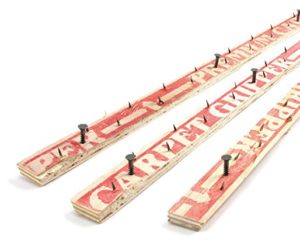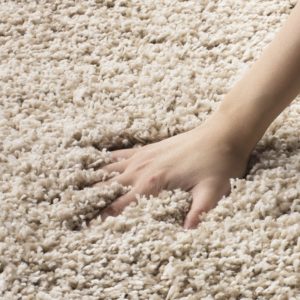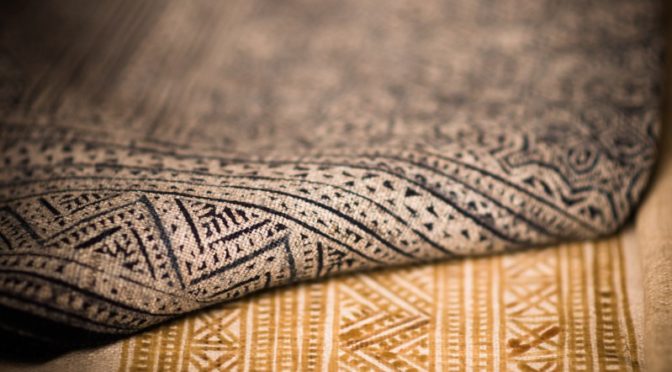
While the idea of installing a new carpet over an old one may seem like a new one, you might want to pause before patting yourself on the back. There are a number of advantages to layering carpets instead of removing an existing carpet and starting afresh, but it’s generally not recommended by pros in the carpeting industry for a number of reasons. Today we’ll review the pros and cons of installing carpet over carpet to help you figure out whether it’s the best plan for your living space, time, and budget.
Why even consider installing a new carpet over an old one?

Even if it’s an unconventional idea, there are many advantages at first glance to installing a new carpet over an old one. If you layer one carpet over another, you won’t have to spend time and money ripping out and throwing away the carpet that’s already in place. You won’t have any environmental concerns in terms of landfills and general waste. And if the carpet you’re about to cover was glued instead of tacked to your subfloor, you’d theoretically save a lot of time, because no one–not even professionals–enjoys tearing out glued-down carpet. And of course, there’s the insulation benefit of having two layers of carpet. And finally, perhaps you wouldn’t even need to install an underpad, because the existing carpet might be as good as an underlayer.
However, while these are considerable advantages, there are many reasons you don’t see carpets installed over carpets often, and it’s not just so installers can charge you twice.
Double carpet installations often fail because it’s hard to install tack strips over multiple carpets

When you keep one layer of carpet and install another on top of it, you’re going to have a hard time nailing tack strips to the perimeter. Tack strips are wooden strips with spikes that point upward; they help keep your wall-to-wall carpets from moving while maintaining it in a stretched and wrinkle-free orientation. Because the nails in tack strips that connect them to the subfloor are typically only 3/4 of an inch long, they aren’t going to make it through your carpets, the underpad, and the subfloor. More than any other reason, this is the biggest factor in why you probably aren’t going to be able to install one carpet over another, even if you wanted to.
Even if the installation succeeds, carpet isn’t a good underlayer

Carpets require firm bases for successful installations and long term durability. Even if you manage to drive your nails through carpets and underlayers into a subfloor, there’s a good chance that your carpets aren’t going to last very long, simply because they won’t get the support they need from sitting on top of another carpet. It’s also important to note that due to the compressibility of carpet from foot traffic, whatever traffic patterns your family and guests drove into your old carpet will soon appear in your new carpet. If you want a fresh start, you need to start without an old carpet in place.
Old carpets are mold and dirt magnets, and you’ll transfer those from one carpet to the next

Ignoring installation and durability difficulties, if you simply install a new carpet on top of an old one, you’re going to give yourself a greater likelihood of dealing with mold and mildew issues. Contrary to popular belief, mold and mildew don’t occur primarily due to humidity, but due to the combination of dirt and humidity. To put it simply, unless you take the time to have your carpet professionally cleaned, you’re almost always going to have traces of dirt left in your old carpet, which will eventually find their way into your new carpet due to foot pressure, bringing you new problems in a brand new carpet. And of course, if you clean your old carpet professionally, you’ll be spending money you could have used to just get rid of it.
If you insist on carpet over carpet, consider these tips

Despite all of the reasons not to install carpets on top of each other, if you’re going to do it, here are some tips to keep in mind. First, make the new carpet a low pile carpet. That means a Saxony, a berber, or a cut and loop. Stay away from friezes or soft carpets; lower piles will give you better odds of having a successful tack strip setup.
Second, plan to replace the carpet-on-carpet setup as quickly as reasonably possible. If you’re doing it so you can flip or sell a home in the next few months to a year, it’s not a terrible idea. Similarly, there’s nothing wrong with using an area rug on a carpet on a short term basis.
Finally, consider adding an underlayment instead of simply placing one carpet on top of another. A light-grade plywood underlayment will provide a much better base and support for the top carpet than the old carpet ever could.
Whatever your carpet strategy, which vacuums will clean it best?

Regardless of what you choose for carpeting, it’s best to invest in vacuums capable of cleaning all styles of carpet as well as bare floors, as virtually no homeowners will live in homes with carpet everywhere (e.g., in bathrooms and kitchens). We also generally recommend buy-it-for-life machines, which are few and far between these days. Two vacuums that qualify both on cleaning power and longevity are the Miele Complete C3 Cat & Dog (reviewed here and here) and Miele Compact C2 Electro+ (reviewed here and here). Both canisters are designed to last for 20 years or more while offering the power to clean any style and pile of carpet or bare floor on the market.
![]() You can buy the Miele Complete C3 Cat & Dog here on Amazon or buy the Miele Compact C2 Electro+ here.
You can buy the Miele Complete C3 Cat & Dog here on Amazon or buy the Miele Compact C2 Electro+ here.
![]() Canadians can buy the Miele C3 Cat & Dog here or buy the Compact Electro+ here.
Canadians can buy the Miele C3 Cat & Dog here or buy the Compact Electro+ here.
 If you find our research on PMC helpful, you can follow our efforts to keep maniacally reviewing home cleaning tools by shopping through our links above. We promise to keep fighting the good fight against every horror children, animals, and grown, yet messy humans can inflict upon a clean home.
If you find our research on PMC helpful, you can follow our efforts to keep maniacally reviewing home cleaning tools by shopping through our links above. We promise to keep fighting the good fight against every horror children, animals, and grown, yet messy humans can inflict upon a clean home.

